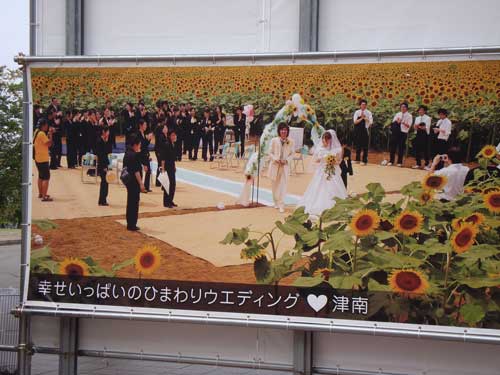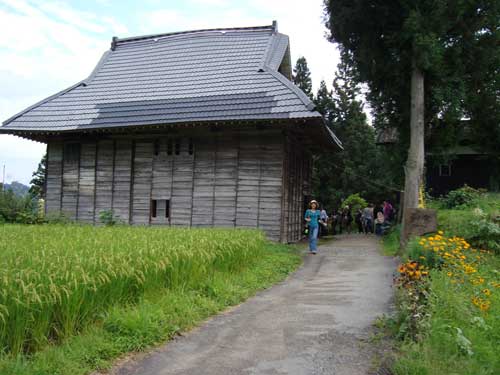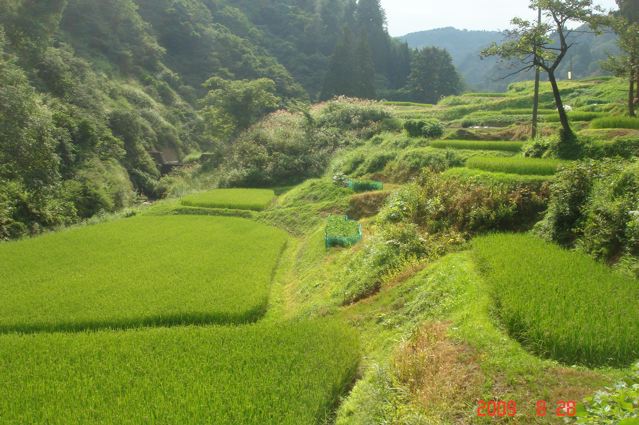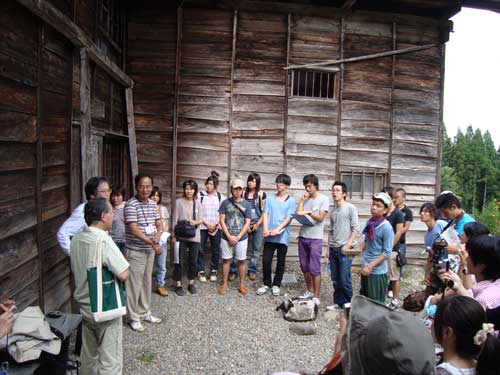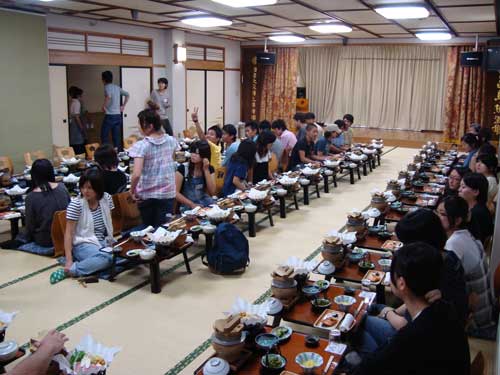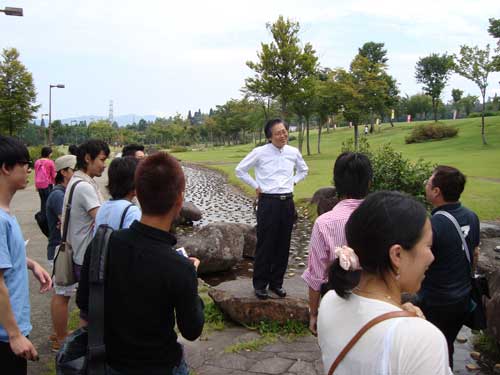
Frankly, arriving at New Greenpia (ニュー・グリーンピア) was a landscape and cultural shock after Obuse. Compared to the 600 year history of Obuse and multi-layered reinventions from the 1990s to the present, New Greenpia’s buildings and gardens reflect Japan’s famous Bubble from the 1980s. Amazingly, many of the Nodai students were born at the very end of the 1980s.
If I understood it correctly, it was a semi-public resort created to provide a place for working class urban people to experience nature. Sometime in the past five years, financial ruin led it to be sold to private owners, at a scandalously low price.
Next to a giant building that serves as conference center, hotel and event space, there are huge lawns leading to tennis courts and golfing. Between the building and the recreation area is a narrow river-themed landscape created by a Nodai professor over 20 years ago. The original design has water coming out of concrete cones, which is no longer functioning.
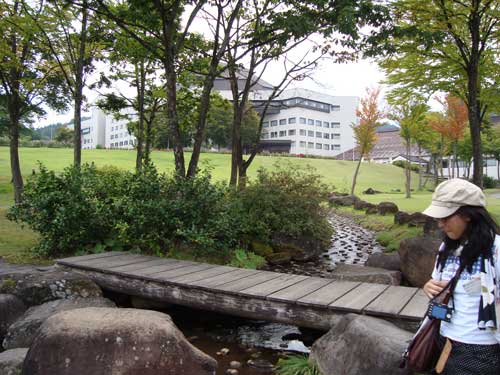
I realize that the built environment was created with good intentions. Still, the scale of the building and the large empty lawns do not take advantage of the natural surrounds. The garden river, too, seems a poor imitation of the surrounding abundance of natural streams and irrigated fields. And the lack of maintenance is a glaring testimony of the financial troubles Japan has encountered in the past 20 years. If anything, New Greenpia served as an educational transition between the seeming success of Obuse and the haunting abandonment we witnessed in Echigo, Niigata, the site of the Niigata Art Triennial, the subject of my next post.
Perhaps New Greenpia sees more activity during ski season. We saw a few go-carts racing down the snow-less slope. I will end this post with an unsettling image near the entrance to the building promoting weddings in sunflower fields (of which we saw no evidence). Maybe the giant photo ad is meant to suggest the contemporary relevance of nature for young yankii couples, possibly city residents. I wonder why all the guests are dressed in black.
